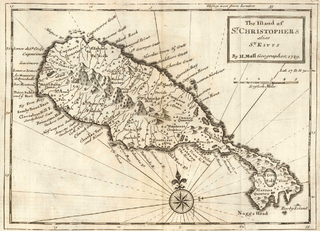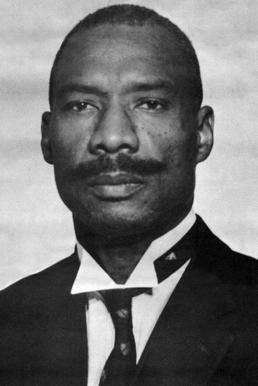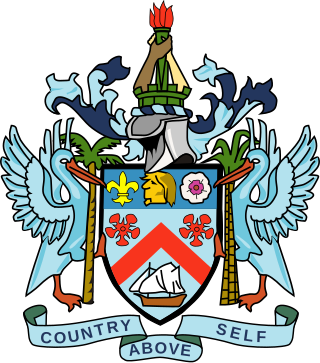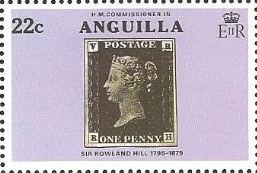
Anguilla is a British Overseas Territory in the Caribbean. It is one of the most northerly of the Leeward Islands in the Lesser Antilles, lying east of Puerto Rico and the Virgin Islands and directly north of Saint Martin. The territory consists of the main island of Anguilla, approximately 16 miles long by 3 miles (5 km) wide at its widest point, together with a number of much smaller islands and cays with no permanent population. The territory's capital is The Valley. The total land area of the territory is 35 square miles (91 km2), with a population of approximately 15,753 (2021).

Nevis is a small island in the Caribbean Sea that forms part of the inner arc of the Leeward Islands chain of the West Indies. Nevis and the neighbouring island of Saint Kitts constitute the Federation of Saint Kitts and Nevis, a singular nation state. Nevis is located near the northern end of the Lesser Antilles archipelago about 350 kilometres (220 mi) east-southeast of Puerto Rico and 80 kilometres (50 mi) west of Antigua. Its area is 93 square kilometres (36 sq mi) and the capital is Charlestown.

Saint Kitts and Nevis, officially the Federation of Saint Christopher and Nevis, is an island country and microstate consisting of the two islands of Saint Kitts and Nevis, both located in the West Indies, in the Leeward Islands chain of the Lesser Antilles. With 261 square kilometres (101 sq mi) of territory, and roughly 50,000 inhabitants, it is the smallest sovereign state in the Western Hemisphere, in both area and population, as well as the world's smallest sovereign federation. The country is a Commonwealth realm, with Charles III as King and head of state. It is the only sovereign federation in the Caribbean.

Saint Kitts and Nevis have one of the longest written histories in the Caribbean, both islands being among Spain's and England's first colonies in the archipelago. Despite being only two miles apart and quite diminutive in size, Saint Kitts and Nevis were widely recognized as being separate entities with distinct identities until they were forcibly united in the late 19th century.
The history of Anguilla runs from the beginning of human habitation, probably via settlement from South America, through its colonization by the English in the early modern period, to the present day. Following a series of rebellions and a short-lived period as an independent republic during the 1960s, Anguilla has been a separate British overseas territory since 1980.

Robert Llewellyn Bradshaw was the first Premier of Saint Kitts and Nevis, and previously served as Chief Minister, legislator, and labour activist.

Saint Christopher-Nevis-Anguilla was a British colony in the West Indies from 1882 to 1983, consisting of the islands of Anguilla, Nevis, and Saint Christopher. From 1882 to 1951, and again from 1980, the colony was known simply as Saint Christopher and Nevis. Saint Christopher and Nevis gained independence in 1983 as the Federation of Saint Kitts and Nevis, while Anguilla would remain a British overseas territory.
James Ronald Webster (2 March 1926 – 9 December 2016) was a politician from Anguilla. After ending the Saint Christopher-Nevis-Anguilla federation in 1967, he served as the island territory's first Chief Minister from 10 February 1976 to 1 February 1977 and again from May 1980 to 12 March 1984.
West Indies Associated States was the collective name for a number of islands in the Eastern Caribbean whose status changed from being British colonies to states in free association with the United Kingdom in 1967. These states were Antigua, Dominica, Grenada, Saint Christopher-Nevis-Anguilla, Saint Lucia, and Saint Vincent.

The monarchy of Saint Kitts and Nevis is a system of government in which a hereditary monarch is the sovereign and head of state of Saint Kitts and Nevis. The current monarch of Saint Kitts and Nevis, since 8 September 2022, is King Charles III. As sovereign, he is the personal embodiment of the Crown of Saint Kitts and Nevis. Although the person of the sovereign is equally shared with 14 other independent countries within the Commonwealth of Nations, each country's monarchy is separate and legally distinct. As a result, the current monarch is officially titled King of Saint Christopher and Nevis and, in this capacity, he and other members of the royal family undertake public and private functions domestically and abroad as representatives of Saint Kitts and Nevis. However, the King is the only member of the royal family with any constitutional role.

Anguilla is a British overseas territory in the Caribbean, one of the most northerly of the Leeward Islands in the Lesser Antilles. It consists of the main island of Anguilla itself, together with a number of much smaller islands and cays with no permanent population.

An unofficial independence referendum was held in Nevis on 18 August 1977. It was organised by the Nevis Reformation Party and sought for island of Nevis to separate from St Kitts prior to independence and for remain within the British Empire as a separate Crown colony, similar to Anguilla, which had seceded from Saint Christopher-Nevis-Anguilla in 1967.

A referendum on separating from Saint Kitts and Nevis was held in Anguilla on 11 July 1967. In February Anguilla had become part of the Saint Christopher-Nevis-Anguilla federation. However, on 30 May the police were expelled and a "Peace Keeping Committee" installed as a government. The referendum was approved by 99.72% of voters, and the following day "President" Ronald Webster declared the separation. However, his new government was not recognised by either the Saint Christopher-Nevis-Anguilla federation or the United Kingdom.

A constitutional referendum was held in Anguilla on 6 February 1969. Following the 1967 uprising on the island, which had seen the local police force expelled, and a referendum on separation, British troops had taken over Anguilla, before leaving in January 1968. On 8 January 1969 Ronald Webster declared independence. A republican constitution was put forward and approved by 99.71% of voters. After the referendum, British troops returned to occupy the island on 19 March.

The Constitution of Saint Kitts and Nevis was adopted on 23 June 1983 and took effect when the country became independent on 19 September 1983. It consists of 11 chapters and various schedules, which establish the rights, responsibilities and definition of the citizens of the federation. It also provides the form and structure of government, and enumerates the powers of the different branches of government. Its treatment of the island of Nevis is rather unusual among federated nations.

General elections were planned to be held in Anguilla on 25 October 1967 following the Anguillian Revolution in May. However, only five candidates stood for the five seats, with all elected unopposed.

General elections were held in Anguilla on 30 July 1968.

The primary law governing Saint Kitts and Nevis nationality regulations is the Saint Christopher and Nevis Citizenship Act, which came into force on 28 February 1984.
Operation Sheepskin was a British military operation in the Caribbean, aimed at restoring British rule to the island of Anguilla, after the island had declared itself as an independent Republic. The British government dispatched two Royal Navy ships and 300 soldiers of the 2nd Battalion, Parachute Regiment and 22 officers of the Metropolitan Police to restore order to the island. The operation was a success and British troops were met with no resistance by the islanders, as they had wanted the island to remain a British territory but with direct association with Great Britain, separate from Saint Kitts and Nevis, of which they were a part.













